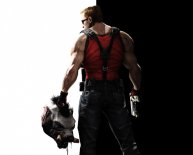
Aristarchus heliocentric model
 Aristarchus (310 BC - circa 230 BC) was a Greek astronomer and mathematician, born in Samos, Greece. He is the first recorded person to propose a heliocentric model of the solar system, placing the Sun, not the Earth, at the center of the known universe (hence he is sometimes known as the "Greek Copernicus"). His astronomical ideas were not well-received and were subordinated to those of Aristotle and Ptolemy, until they were successfully revived and developed by Copernicus nearly 2000 years later.
Aristarchus (310 BC - circa 230 BC) was a Greek astronomer and mathematician, born in Samos, Greece. He is the first recorded person to propose a heliocentric model of the solar system, placing the Sun, not the Earth, at the center of the known universe (hence he is sometimes known as the "Greek Copernicus"). His astronomical ideas were not well-received and were subordinated to those of Aristotle and Ptolemy, until they were successfully revived and developed by Copernicus nearly 2000 years later.
Heliocentrism
The only work of Aristarchus which has survived to the present time, On the Sizes and Distances of the Sun and Moon, is based on a geocentric worldview. We know through citations, however, that Aristarchus wrote another book in which he advanced an alternative hypothesis of the heliocentric model.
Aristarchus thus believed the stars to be infinitely far away, and saw this as the reason why there was no visible parallax, that is, an observed movement of the stars relative to each other as the Earth moved around the Sun. The stars are in fact much farther away than was assumed in ancient times, which is why stellar parallax is only detectable with telescopes. But the geocentric model was assumed to be a simpler, better explanation for the lack of parallax.
Size of the Moon
Aristarchus observed the Moon moving through the Earth's shadow during a lunar eclipse. He estimated that the diameter of the Earth was 3 times the Moon's diameter. Using Eratosthenes' calculation that the Earth was 42, 000 km in circumference, he concluded that the Moon was 14, 000 km in circumference. The Moon has a circumference of about 10, 916 km.
Distance to the Sun
Aristarchus argued that the Sun, Moon, and Earth form a near right triangle at the moment of first or last quarter moon. He estimated that the angle was 87. Using correct geometry, but inaccurate observational data, Aristarchus concluded that the Sun was 20 times farther away than the Moon. The true value of this angle is close to 89 50', and the Sun is actually about 390 times farther away. He pointed out that the Moon and Sun have nearly equal apparent angular sizes and therefore their diameters must be in proportion to their distances from Earth.
He thus concluded that the Sun was 20 times larger than the Moon. This is also incorrect, although logical. It does, however, suggest that the Sun is clearly larger than the Earth, which can be taken to support the heliocentric model.
See also:
- Delavnica
- Описание unarmed security guard los angeles тут.
- https://aeclimate.com монтаж и чистка систем кондиционирования.

















